Beachy Head and the Seven Sisters are two natural white chalk cliff formations that form the principal attractions of the Seven Sisters Country Park, which is part of the South Downs National Park.
Beachy Head
Located between Eastbourne and the Seven Sisters, Beachy Head is a prominent chalk headland that boasts a 162m- (531 ft)-high chalk sea cliff, which is Britain’s highest.
The 43m- (141 ft)-high Beachy Head Lighthouse was built on the sea below Beachy Head in 1902 as mist from low clouds would sometimes obscure the light from the nearby Belle Tout lighthouse.
Like the Seven Sisters, Beachy Head has appeared in several films including Battle of Britain (1969), Quadrophenia (1979), The Living Daylights (1987), Harry Potter and the Goblet of Fire (2005) and the 2010 remake of Brighton Rock as well as television shows including Black Mirror and Luther.
The best view of Beachy Head is from the sea but if you don’t have your own yacht you can walk along one of the walking trails near the top of the cliff.
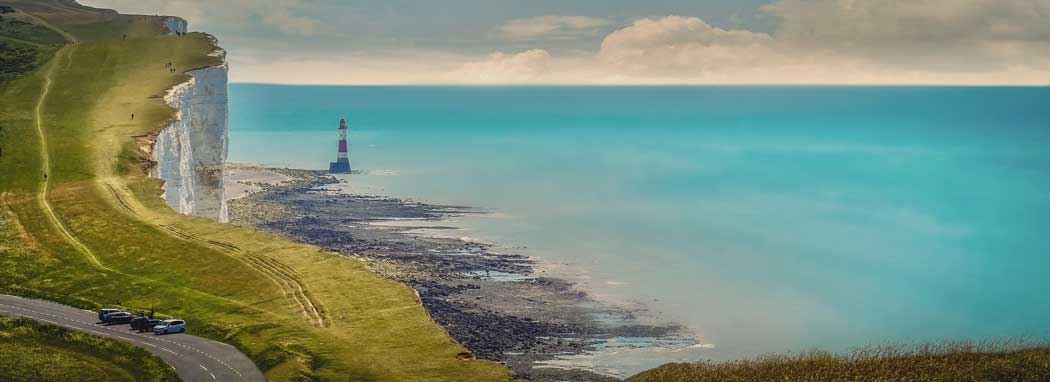
The Beachy Head Story
The Beachy Head Story is an exhibition adjacent to the Beachy Head pub on Beachy Head Road, just a short walk from the footpath that takes you past Beachy Head. The exhibition chronicles the formation of the South Downs over 90 million years and showcases history of the area from the Romans to modern smugglers. Artefacts on display include fossils, objects from the Beachy Head Lighthouse, a Roman coin hoard and the skeleton of the Beachy Head Woman. Admission to the Beachy Head Story is free of charge.
The Seven Sisters
The Seven Sisters is a series of chalk cliffs facing the English Channel. There are seven main hills along this stretch of coast and an eighth sister is being created by erosion from the sea. At 77m (253 ft), Went Hill Brow is the largest of the Seven Sisters.
It is a surprisingly popular destination for Asian tourists (especially those from China and South Korea) who learn about the cliffs after seeing them featured on Asian television programmes and music videos.
The cliffs have appeared in several films including Robin Hood: Prince of Thieves (1991), Harry Potter and the Goblet of Fire (2005), Atonement (2007) and Mr Holmes (2015). Many people also know the cliffs from their appearance in a Microsoft Windows wallpaper.
Birling Gap is the easiest spot to see the Seven Sisters and it is easily accessible by public transport but the best view is from Seaford Head at the western end of the Seven Sisters, which involves a half-hour walk from the closest bus stop.
Seaford Head near the mouth of the River Cuckmere provides the classic view of the Seven Sisters where a cluster of Coastguard cottages nicely balances the composition providing the iconic photo opportunity of the cliffs.
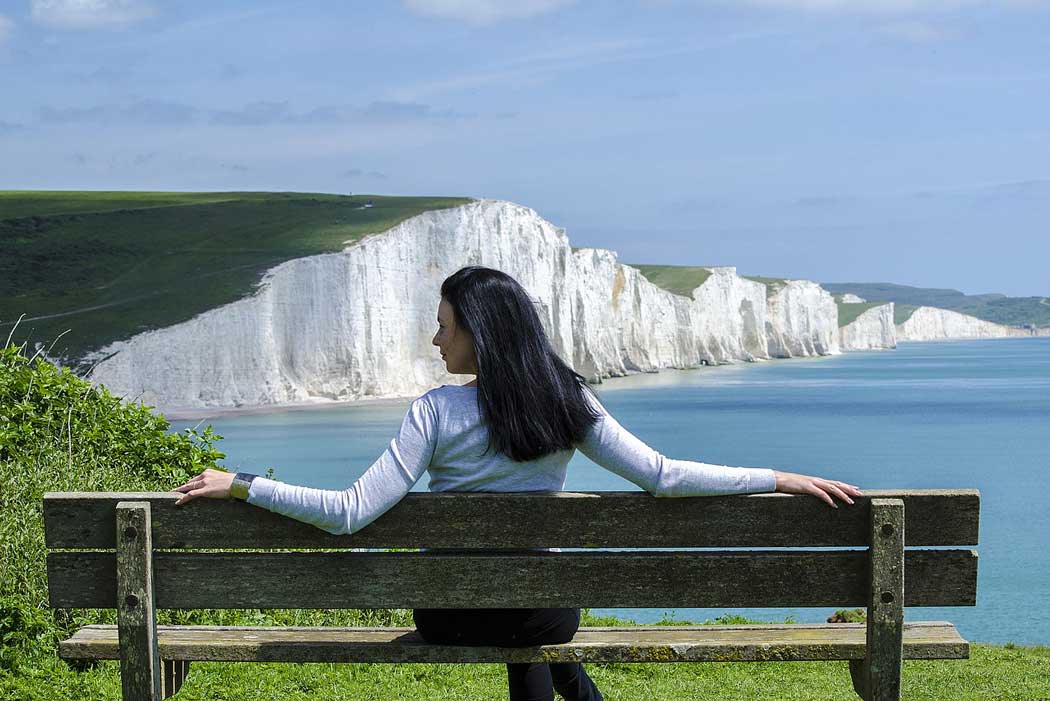
Visiting Beachy Head and the Seven Sisters
The Seven Sisters lie just west of the small hamlet of Birling Gap and Beachy Head lies between Birling Gap and Eastbourne. Local buses run along Beachy Head Road during summer and year-round on Sundays, making the cliffs reasonably accessible to visitors relying on public transport but during winter you may need to get off the bus in East Dean and walk half an hour or so to Birling Gap.
Both regular local buses (operated by Brighton & Hove Buses) and the hop-on-hop-off Eastbourne Sightseeing bus go from Eastbourne to Beachy Head and Birling Gap where you can see the view of the Seven Sisters from the eastern end of the cliffs but only the local buses (run by Brighton & Hove) let you see the Seven Sisters from the more picturesque western end.
Brighton & Hove bus routes 12, 12X and 13X run through the Seven Sisters Country Park en route between Brighton and Eastbourne giving you access both ends of the Seven Sisters (route 13X also goes to Beachy Head), but you may need to walk half an hour or so to get to the best viewing spots. Buses run every 20 minutes Monday–Saturday and every half hour on Sundays.
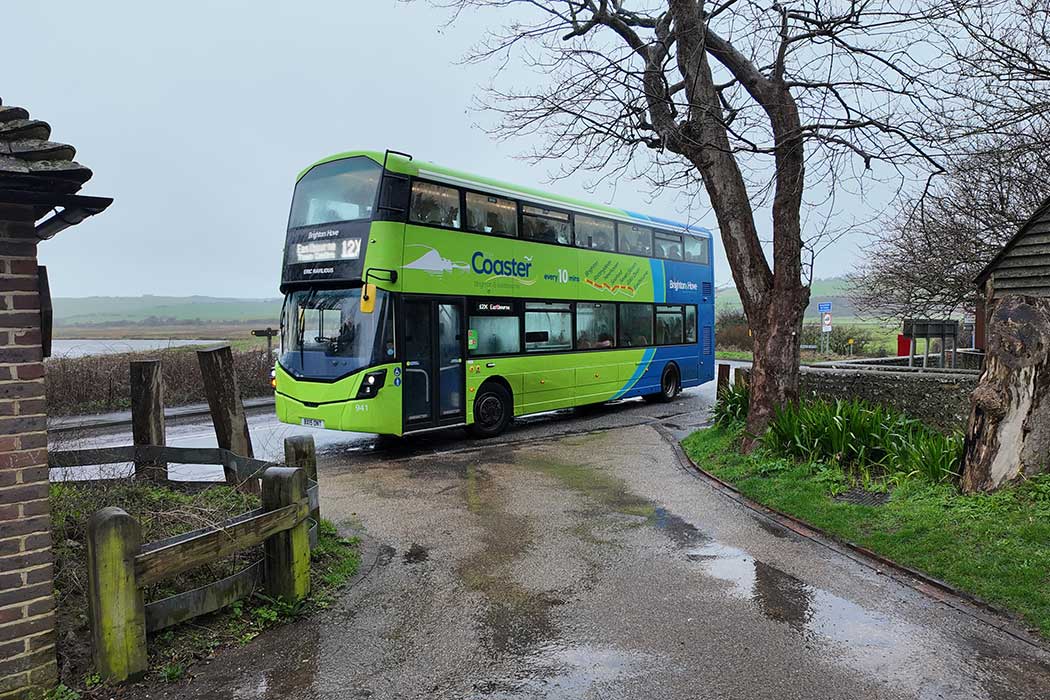
The Eastbourne Sightseeing bus to Beachy Head and Birling Gap (at the eastern end of the Seven Sisters) only operates 30 March–4 November. A 24-hour ticket costs £10 (£7.50 for seniors and £5 for children under 16) and buses run every 30 minutes on most days.
Between these two bus companies, the cheaper buses run by Brighton & Hove are the better option as these buses stop at the Cuckmere Inn near Exceat where you take a walking trail to Seaford Head at the western end of the Seven Sisters, which offers the most iconic view of the cliffs but Brighton & Hove buses only go close to Beachy Head and Birling Gap on Sundays.
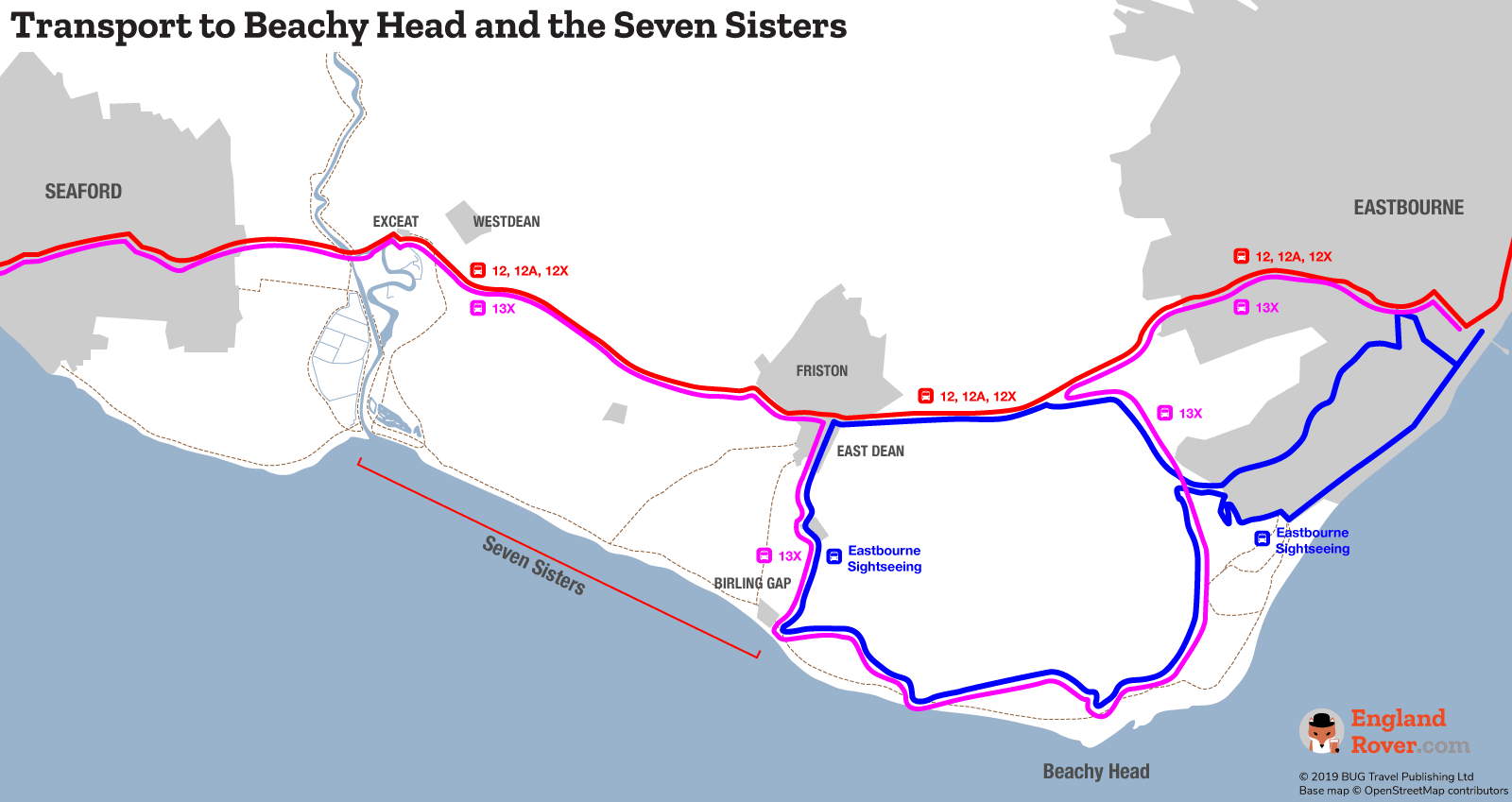
Visiting Beachy Head
Beachy Head is relatively close to Eastbourne and you can walk here from Eastbourne Pier in around an hour.
Brighton & Hove Buses route 13X stops at several spots near Beachy Head but this bus only runs on Sundays. On other days (but not in winter) the more expensive Eastbourne Sightseeing bus runs between central Eastbourne and Birling Gap. The Eastbourne Sightseeing bus operates 30 March–4 November.
Most people alight the bus at the Beachy Head pub and there are several walking trails that depart from here.
The walking trail from Eastbourne leaves from The Kiosk near Bede’s School on Dukes Drive.
Visiting the Seven Sisters
There are several spots to visit the Seven Sisters with most people choosing to view it from either Birling Gap at the Eastbourne end of the cliffs or Seaford Head at the Brighton end of the cliffs.
Birling Gap is the easiest spot to see the Seven Sisters and it is accessible by public transport and there are facilities including a National Trust shop and cafe, a wheelchair-accessible viewing platform and a staircase that gives you access to the beach during low tide.
Brighton & Hove Buses route 13X stops near the National Trust visitor centre at Birling Gap but this bus only runs on Sundays. On other days (but not in winter) the more expensive Eastbourne Sightseeing bus runs between central Eastbourne and Birling Gap. The Eastbourne Sightseeing bus operates 30 March–4 November.
When these buses aren’t running, you will have to take the bus (Brighton & Hove routes 12 and 12X) to East Dean and walk half an hour to Birling Gap.
The classic and most photographed, view of the Seven Sisters is from Seaford Head near the mouth of the River Cuckmere. To get here, take the bus to The Cuckmere Inn (between Seaford and Exceat) and follow the footpath behind the pub or get off at the next stop (if you’re coming from Brighton), where you’ll find a visitor centre where you can get more information about visiting the Seven Sisters. It is around a 25-minute walk from The Cuckmere Inn to Seaford Head near the Coastguard cottages.
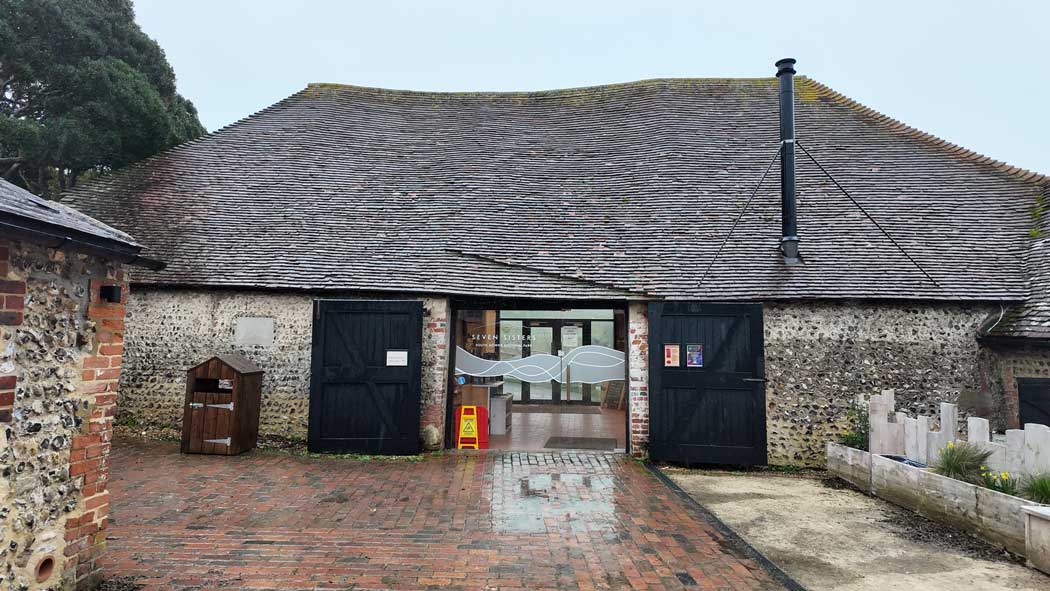
Although Seaford Head is a fair walk from the bus stop, there are more buses to The Cuckmere Inn compared with buses that stop at Birling Gap and buses stop here every day all year round. It is a lovely walk alongside the river and The Cuckmere Inn is a nice spot for a drink and something to eat before catching the bus back to Eastbourne (or onwards to Brighton).
Brighton & Hove bus routes 12, 12A, 12X and 13X stop here en route between Brighton and Eastbourne and Cuckmere Buses route 47 stops here en route between Seaford and Berwick (route 47 does not run during winter).
The East Sussex Day Ticket costs £5 and lets you ride all day on most buses in East Sussex. This is a handy ticket if you want to visit the Seven Sisters and also if you want to travel between Brighton and Eastbourne.
The South Downs Way runs along the top of the Seven Sisters and it is possible to walk from Birling Gap to Seaford Head. The walk takes between one and two hours.
An easier, but more expensive, option is to take a tour from either Brighton or London. These tours take you to the most scenic viewpoints allowing you to see a lot within a relatively short time and they are a great option if time is limited and you would rather not mess around with catching buses or driving.
We may earn a small commission if you book after clicking these links.


There are no comments yet.